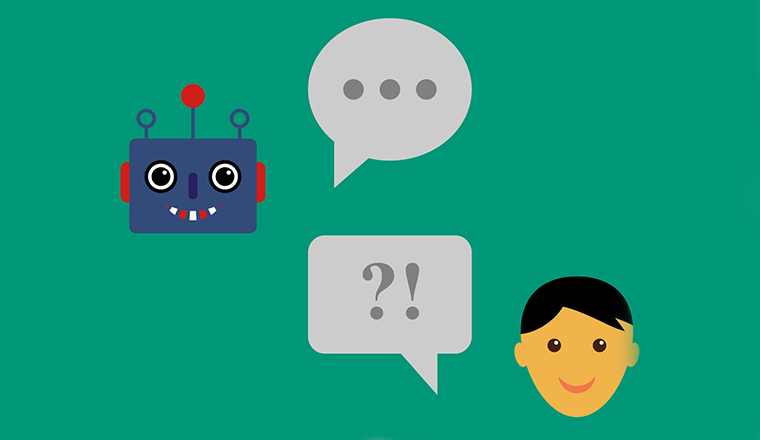Chatbots are the trend in online and digital marketing. The hype is deserved and despite being able to answer most questions, what happens if the chatbot does not know how to respond?
Besides rule-based bots, chatbots are generally very intelligent. When properly designed, they can function effectively in place of a marketing team.
Recent studies confirm that chatbots have answered 80% of customer queries without any form of human intervention. That is 8 out of 10 for the chatbots that exist presently.
However, as impressive as that sounds, there remains the possibility that a chatbot might be unable to answer a question; therefore, what happens if the chatbot does not know how to respond?
The possibility of a chatbot being unable to respond does not undermine its effectiveness and the salient roles it performs in a business.
The benefits of chatbots are far-reaching and it can give a significant boost to your business.
There are still upgrades being developed, but even now, they can still give terrific results as long as you use some of the world-renown chatbots like Zebrabuzz and a few others.
With machine learning and natural language processing, they adapt and learn on their own to give quality answers, but there comes a time when a chatbot does not know how to respond.
Read: How do Chatbots Know How to Respond?
Reasons Why A Chatbot Does Not Know How to Respond
There are quite a number of reasons why a chatbot does not know how to respond, and before examining what happens, it is good to first highlight what may have gone wrong.
Type of Chatbot
By saying ‘type of chatbot’, we do not mean there are chatbots that are bad or useless. However, the problem comes when you expect too much from the bot you may have employed.
A bot may not be suitable for the kind of business you do. Therefore, the chatbot may not know how to respond and falter.
For example, a rule-based or decision-tree chatbot may sometimes not know how to respond to some customer queries.
That is not to say they won’t respond at all, but the response might not answer the customer’s query which is similar to not responding at all.
There are two primary groups of chatbots; rule-based and AI-powered chatbots. The intelligence of AI-Powered chatbots is unmatched.
Rule-based or Decision Tree bots are not intelligent. They can only respond based on what has been programmed into them; an established list of rules.
This list determines the way in which the bot responds to the query. When a user asks a question, some rule-based chatbots with a little bit of intelligence will use the keywords in the query to search for possible answers that has been programmed.
If the keyword does not match anything in the list, the chatbot does not know how to respond.
For example:
If a user asks, ‘Teach me a way to create bots’
If the keywords that have been programmed into the robot are words like: ‘How to create chatbot’, ‘How to make chatbots’ and so on, it is very likely a rule-based chatbot will not know how to respond to the user’s query.
You will see that the user is asking the same questions that have been programmed, but because it is not very intelligent, the chatbot does not know how to respond.
However, the narrative is different for Artificial Intelligence bots
AI-Powered chatbots like Zebrabuzz for instance are highly intelligent, and can learn on their own. They can improve and learn to respond to queries smartly.
Although they are also setup with a list of rules, through interaction with users, they adapt and learn.
Artificial Intelligence will make a chatbot know how to respond to question rule-based chatbots cannot answer because they were not programmed or where not programmed in the words the user used.
No Analysis Functions
Most companies abandon their chatbots once it is launched. They think the job is done after the bot is built.
To regularly improve a chatbot’s functionality, it needs to go through continuous analysis that will enable it to improve to serve your customers in the best possible way.
The problem of analysis function is solved by Zebrabuzz chatbots who are always optimised and equipped to the latest trend in order to ensure your bot delivers desired results.
Inappropriate Usage
Chatbots are all the rage in today’s online and digital marketing. However, you need to ask yourself if you are using them properly or if you well and truly need them.
Inappropriate usage is a reason why a chatbot does not know how to respond.
Chatbots are superb and will give terrific results, but you need to consider what it offers and if they are suitable for the kind of business you do.
The complexities in some businesses and some customer queries like individual problems can be difficult for chatbots and if they are not used properly, they will not know how to respond.
No Clear Scope
As versatile as they come, you need to have a clear scope for your chatbot. Most businesses see bots as a way of solving all of their problems.
Chatbots will bring terrific results, and while it won’t complain if you try to use it in many areas of your business, there remains the possibility it will not know how to respond if it is over-used.
Even if it knows how to respond, the responses may not be satisfactory. It is advisable to find a few places in your business where you are most lacking, and focus your chatbot on those.
That way, the chatbot does not cover too many topics and can easily give customers satisfactory answers.
Lack of Transparency
Another reason could be lack of transparency. Although they can chat like human beings, it is advisable to let users know they are on to a bot.
This eliminates false expectations and helps the users know what kind of questions to ask and most especially how to structure them.
A user may have an issue, but instead of explaining what happened, if he knows he’s on to a bot, he will go straight to the question and how to solve it. There is no need to seek empathy.
What Happens If The Chatbot Does Not Know How To Respond?
Dead End Conversations
When a chatbot does not know how to respond, the conversation usually leads to a dead end. This is in part due to the use of rule-based chatbots.
Rule-based chatbots are not bad, but programmers keep conversation too simple that any query from the user that does not follow the defined paths causes problems for the bot.
This problem is eliminated by Zebrabuzz chatbots with very complex forms of programming that are built to understand users’ query structures, conversations never lead to dead ends.
Irrelevant Responses
When a chatbot does not know how to respond, it will sometimes give responses that have no bearing to what the user wants.
This is because they were not well-built and designed. Chatbots will derail from the subject matter when they do not know how to respond.
Malfunction
Chatbots can malfunction when they are unable to find a response. They may begin to overload users with unnecessary information, have sentence syntax error, among many others.
How to Eliminate The Problem of Lack of Response From Chatbots

Have a Back-Up Human Representative
Yes they are brilliant, but since there is a chance (no matter how little) that they may not know how to respond, it is good practice to have a human representative as back-up.
This way, when your chatbot cannot find the response to a user’s enquiry, it can redirect the user to a chatbot for help so your business image will not suffer.
Always Let your users know they are on to a bot
It is good practice for users to be aware they are on to a bot. Users will generally rephrase their messages and make it shorter for the bot.
A user that thinks he is chatting with a human may desire empathy and type a long drawn out message with a lot of fragments and sentences that may confuse the chatbot.
Use Well-Designed Bots
There is no better way to eliminate this problem than making use of properly designed chatbots.
When you use bots like Zebrabuzz, there is little or no occurrence of situations whereby your chatbot does not know how to respond. They are well-designed and programmed to always meet customer expectations and give your business the designed results.







